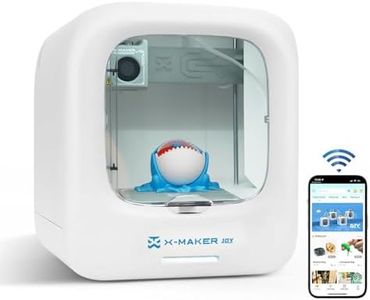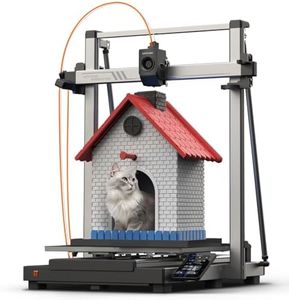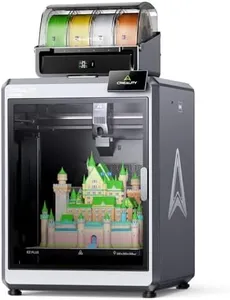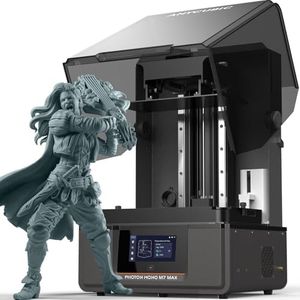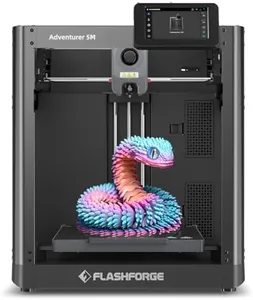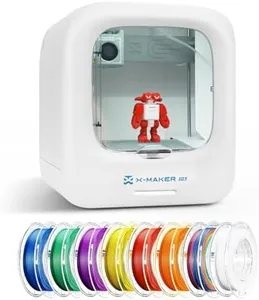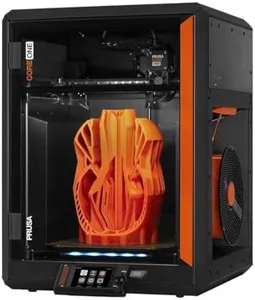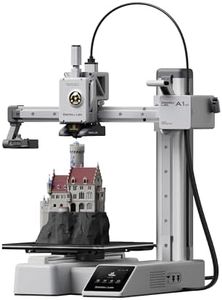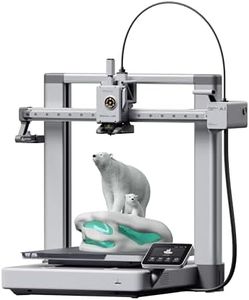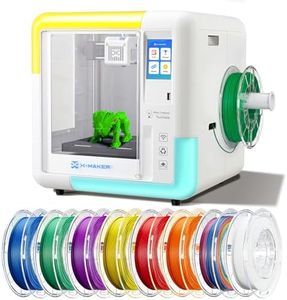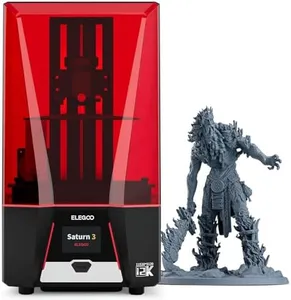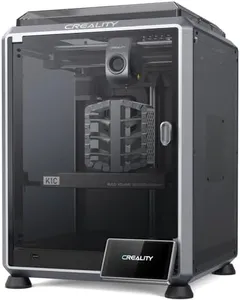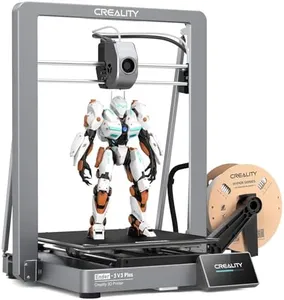
Top-10 Diy 3 D Printers
Loved in the USA
Handpicked for quality & trusted by thousands of customersSponsored
Sponsored
Great quality at a fair price.

More great picks just for you
Original Prusa MK4S 3D Printer, Ready-to-use 3D Printer, Assembled and Tested, Removable Print Sheets, 1kg Prusament PLA Spool Included, Print Size 9.84 x 8.3 x 8.6 in
Solid Value from a Trusted Brand
Creality K1C 3D Printer, 2024 New Version 3D Printers with 600mm s Fast Printing Speed, Support Carbon Fiber Filament 300℃ High-Temp Print, Auto Leveling and Clog-Free Direct Extruder
Item still has Pre-Tariff price
Creality Ender 3 V3 Plus 3D Printer, CoreXZ 600mm s High-Speed Auto Leveling Direct Drive Extruder Stable Metal Build Tri-Metal Nozzle Ender 3D Printer Large Print Size 11.8x11.8x13.0in
Solid Value from a Trusted Brand
Our Top Picks
Winner
FLASHFORGE AD5X Multi-Color 3D Printer, CoreXY 600mm/s High-Speed, 1-Click Auto Leveling, 300°C Direct Drive Extruder, 220x220x220mm Build Volume, Ideal for Precision and Efficiency
Most important from
161 reviews
The FLASHFORGE AD5X is a versatile 3D printer well-suited for DIY enthusiasts who want to explore multi-color printing and fast production. Its 220x220x220mm build volume is decent for most personal projects, allowing you to print medium-sized objects. The printer shines with its Core XY design, enabling very high print speeds—up to 600mm/s—which is great if you want to complete prints quickly. It offers excellent print quality thanks to features like a 300°C direct drive extruder and multiple nozzle sizes, so you can switch between fine detail and faster, larger prints. The 1-click auto leveling makes setup easier, which is helpful if you’re not experienced with manual bed calibration.
The metal frame adds stability and durability, ensuring steady and reliable printing over time. It supports up to four colors simultaneously, which is a rare feature at this price and allows for creative, vibrant multi-material projects. Users will also appreciate smart touches like resume printing after power loss and remote monitoring via a mobile app. On the downside, the build volume is average compared to some printers with larger print areas, so very large projects might not fit. Also, while it supports multiple nozzle sizes, the maximum build size might limit some advanced users.
The printer’s weight and metal frame mean it’s less portable, and its fast speeds could require some tuning to balance quality and speed effectively. For those looking for a fast, colorful, and user-friendly 3D printer suitable for typical DIY projects with good precision, the FLASHFORGE AD5X represents a strong choice.
Most important from
161 reviews
Anycubic Kobra 3 Max 3D Printer Only, Support Multicolor Needs ACE Pro, 600mm/s High-Speed Printing Large Build Volume 420x420x500mm Auto Leveling & Smart Vibration
Most important from
1635 reviews
The Anycubic Kobra 3 Max is a robust choice for DIY enthusiasts seeking a large-scale 3D printer. Its standout feature is the jumbo-sized build area of 450x450x500mm, which allows users to create large, intricate projects without segmenting them into smaller parts. This makes it ideal for crafting life-sized models or large DIY projects. Another highlight is its high-speed printing capability, reaching up to 600mm/s, significantly reducing print times while maintaining stable and precise results. This speed, coupled with the intelligent AI monitoring system, ensures that users can produce high-quality prints efficiently.
Moreover, the printer's ability to support multicolor prints, although requiring additional hardware (Anycubic ACE Pro), expands creative possibilities for users interested in vibrant, multi-hued designs. Filament compatibility is broad, supporting materials like PLA, TPU, ABS, and more, which provides versatility for different project requirements.
However, the Anycubic Kobra 3 Max is not without its drawbacks. The necessity of additional units for full multicolor capabilities might not be ideal for users looking to avoid extra costs and complexity. Additionally, while auto-leveling is a convenient feature, new users might still face a learning curve in mastering the printer's setup and operation. The printer's frame material and design contribute to its durability, but at nearly 48 pounds, it is quite heavy and may require a dedicated space in your workshop. The Anycubic Kobra 3 Max is well-suited for those who need a large build volume and fast printing speeds, especially if they are willing to invest in additional components for advanced color printing.
Most important from
1635 reviews
Creality K2 Plus Combo 3D Printer, Multi Color Printing with New CFS, Max 600mm/s Printing Speed, Full-auto Leveling, Next-Gen Direct Drive Extruder, Dual Al Camera, Build Volume 350 * 350 * 350mm
Most important from
297 reviews
The Creality K2 Plus Combo is a strong choice for DIY enthusiasts who want to explore multi-color 3D printing with ease. Its standout feature is the ability to connect up to four CFS filament systems, allowing prints in up to 16 colors, which saves time on painting and finishing. The print volume of 350 x 350 x 350 mm is decent for many projects, giving enough room for medium-sized models. Speed is impressive here, with a maximum of 600 mm/s accelerated by advanced step-servo motors, meaning quicker completion without sacrificing detail.
The printer supports a wide range of filaments including PLA, ABS, PETG, and some carbon fiber blends, thanks to its heated chamber and hardened steel nozzle, making it versatile for different materials. Bed leveling is fully automatic with a smart anti-tilt system, which helps beginners achieve smooth first layers without manual fiddling—a big plus for convenience and print quality. The frame is solid and stable, built with metal and die-cast parts, reducing vibrations and layer shifts for cleaner prints. Additional perks like dual AI cameras help monitor prints for errors or filament issues, adding a layer of security and ease of use.
On the downside, the machine is quite large and heavy, so it requires sufficient workspace and might not be very portable. Also, setting up and managing multiple filaments can be complex for absolute beginners, and the price may be higher compared to simpler models. This printer is suited for hobbyists who want advanced multi-color printing with fast speeds and material flexibility, and who don’t mind investing time to learn its features.
